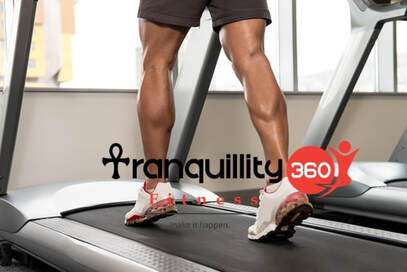 Calorie counters on treadmills, ellipticals, and other cardio machines are convenient. At the end of your work, the number of calories you burned can be surprising. It can certainly make you feel better and keep you motivated to run or exercise more. It's important to know that these calculated calories are just rough estimates. While some types of cardio machines are more accurate than others, none of them will be 100 percent accurate. In general, they overestimate your calorie burn by 15 to 20 percent because there are too many factors involved. Learn what these factors are and how you can improve your estimated burned calories. Calorie Burn Factors Many of the high-tech cardio machines found in gyms today ask you to enter your personal details before you begin. This often includes your weight and some also factor your gender and age into the equation. The problem, however, is that there are other important factors to consider. Cardio machines such as treadmills use standard formulas to figure out the number of calories burned. It is like a calorie-burn formula that you can do on your own. In either of these, factors like your fitness level and your body composition and size are not accounted for.1
Experience and Efficiency More than with other machines, when you run on a treadmill, your form and efficiency play a larger role in calorie burn. The machine cannot account for these factors. This is because beginner runners tend to be inefficient, running with a side-to-side movement and lots of bouncing up and down. These extra motions expend more energy than the experienced runner's efficient stride. This will change over time as a beginner runner perfects her/his stride, but it's an important consideration. Also, if you are using the handrail on a treadmill or stair stepper, you may be diminishing your calorie burn because you're making the workout easier. You won't be swinging your arms naturally with your stride. Due to the way athletes use them, there are also variables in the accuracy of different types of machines. For example, a stationary bike limits movement so everyone uses it in generally the same way. The calorie counters on these are much more accurate than treadmills and stair steppers, which offer more freedom of movement. Cardio Machine Formulas The formulas that cardio machines use to calculate can vary from one manufacturer to another. Generally, most machines will base their formula on The Compendium of Physical Activities. Initially developed in 1987 and receiving regular updates, it assigns a value to a variety of activities, from exercise to inactivity, and sex to home repairs. The values are based on the Metabolic Equivalent, known as MET. he amount of energy (calories) you burn for other activities is compared with this baseline. Once again, there are many factors involved and the Compendium gives many options. For instance, the running category is filled with variables. It states that jogging burns 7.0 MET (7.0 kcal/kg/hour), running 6 miles per hour (a 10-minute mile) burns 9.8 MET, and running 10 miles per hour (a 6-minute mile) burns 14.5 MET. This does not account for any factors relating to you personally. Wearable Fitness Trackers If you can't rely on the cardio machine's calorie counter, can you turn to your personal fitness tracker? These popular wearable devices can monitor all sorts of your things related to your health and activity level, so they're a great option for tracking your workouts. A study at Stanford University took a look at seven different devices to check their accuracy. The results showed that the most accurate of them was off by an average of 27 percent and the least accurate by 93 percent.2 The heart rate monitor was the most reliable function, but the researchers concluded that the calorie counter should not be counted on. Reliable Alternatives Whether it's a cardio machine or your fitness tracker, it's best to take the calories burned readings with a grain of salt. It's fine to use the numbers as a benchmark for your workouts, but don't plan on consuming additional calories based on that number. Sometimes, this leads to gaining weight despite your best exercise efforts. You can also gauge your workout by your perceived exertion or track your target heart rate. This can also help you when moving from one machine to another. If you get the same reading on two machines for the same duration but one seems easier, you're probably burning fewer calories on the easier machine. Foot Note Having a general idea of how many calories you're burning during exercise is a good way to manage your health and weight. Just keep in mind that any of the calorie counters are probably overestimating what you're burning. These are just numbers, though, and how you feel after the workout is more important
2 Comments
6/10/2019 07:50:17 am
Our body is filled with calories that we gain in the foods that we eat. There are a lot of nutrients that we can get when we eat some foods, but we should also have a time to exercise to ensure that our body is in good state and the unwanted things in our body will be removed. We should have a regular check up with the doctor so that we can see and have a closer look in our body. Health is wealth and that is a simple phrase we all should remember.
Reply
25/10/2019 11:42:48 am
I think it's perfectly alright to keep counting calories. As long as you focus more on actually doing what you're supposed to be doing instead of just monitoring the numbers, then you are heading in the right direction. Me, I am trying my best to eat right but I am having a difficult situation in my residence. Where I live, it's very difficult to find the things I need. I heard I should just grow it. That's a great idea. I should have thought about all that a long time ago. Maybe I wouldn't be feeling sick right now.
Reply
Leave a Reply. |
AuthorsThis blog is updated by Tranquillity 360 fitness personal trainers, as well as other guest bloggers. Archives
July 2021
Categories |

 RSS Feed
RSS Feed